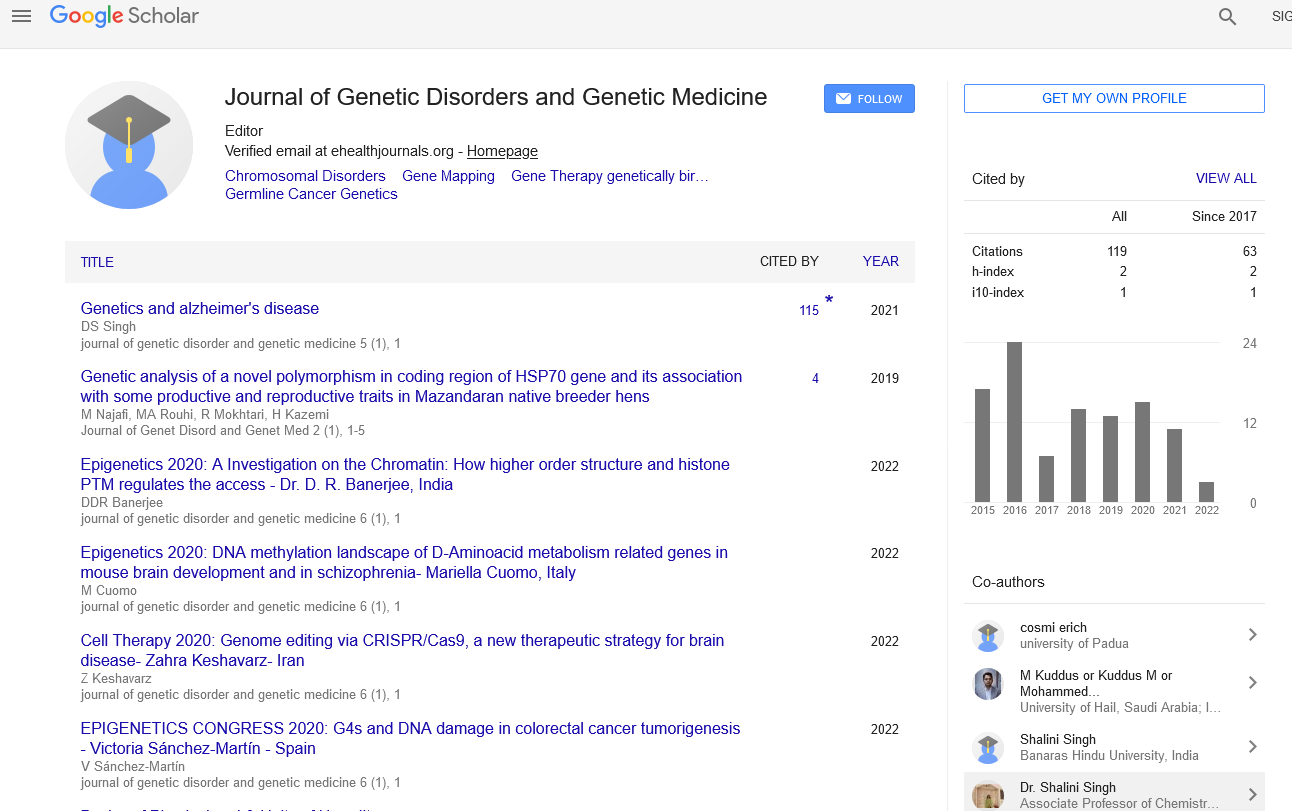Basics of Physical and Functional Units of Heredity
Received: 02-Dec-2021 Accepted Date: Dec 10, 2021; Published: 22-Dec-2021
Citation: Hassan Raza. Basics of Physical and Functional Units of Heredity. J of Genet Disord and Genet Med 2021; 5(4):1.
This open-access article is distributed under the terms of the Creative Commons Attribution Non-Commercial License (CC BY-NC) (http://creativecommons.org/licenses/by-nc/4.0/), which permits reuse, distribution and reproduction of the article, provided that the original work is properly cited and the reuse is restricted to noncommercial purposes. For commercial reuse, contact reprints@pulsus.com
Abstract
The sum of heredity, of all biological processes by which characteristics are particular can be transferred from parents to their children. The theory of heredity encloses two apparently paradoxical observations about organisms: the reliability of a species from one generation to generation and the difference among individuals within a species. The actually two sides of the coin having the same, has becomes plain in the study of genetics. Both aspects of inborn traits can be explained by genes, the functional units of DNA and RNA material that are found within all living cells.
Introduction
Every member of a species has a set of genes to the species. It is the set of genes that provides the commitment of the species. Between individuals within a species, however, variations can occur in the form of each gene takes, provide the genetic basis for the fact that no two separate have exactly the same quality. The set of genes that an Children inherits from both parents, a combination of the genetic material of each, is called the organism’s genotype. The genotype is go against to the phenotype, which is the outward organism’s appearance and the developmental outcome of its genes. The phenotype includes an organism’s physiological processes, bodily structures, and behavior’s. Although the genotype control the broad limits of the features an organism can develop, the features that actually develop, the phenotype, depend on complex interactions between and their environment and genes. The genotype remains constant throughout an organism’s lifetime; however, because the organism’s external and internal environments change always, so does its phenotype. In conducting genetic studies, it is crucial to discover the degree to which the observable characteristic is mature to the pattern of genes in the cells and to what extent it arises from influence of environmental. Because genes are essential to the explanation of observations, hereditary genetics also can be defined as the study of genes. Discoveries into the nature of genes have shown that genes are important cause of all aspects of an organism’s makeup. Due to this cause, most areas of biological research now have a genetic component, and the study of genetics has a position of central importance in biology. Genetic research also has exhibit that effectively all organisms on this planet have similar systems of genetic, with genes that are built on the same principle and that functions accordingly to similar mechanisms. Although species differ in the sets of genes they contain, many similar genes are found across a broad range of species. For example, a large proportion of genes in baker’s yeast are also situated in humans. This similarity in genetic makeup between organisms that have such disparate phenotypes can be explained by the degeneration relatedness of virtually all life-forms on Earth. This genetic unity has reshaped radically understanding the relationship between all other organisms and humans.
Conclusion
Genetics also has had a deep impact on human affairs. Throughout history humans have improved or created many different foods, medicines, and textiles by subjecting animals, plants, and microbes to the ancient techniques of selective breeding and to the modern methods of DNA recombinant technology. Now a day’s medical researchers have begun to discover the role that genes involves in disease. The importance of genetics only promises to become greater as function and structure of more and more human genes are characterized.





